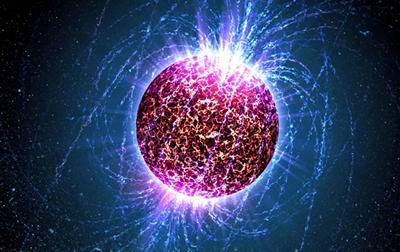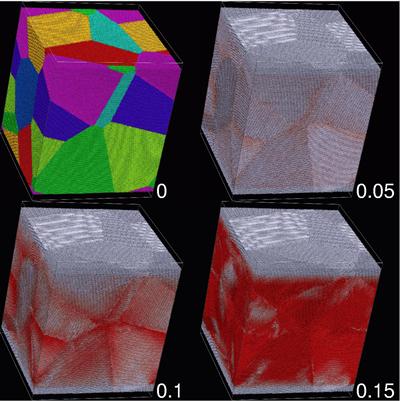INT workshop on astro-solids, dense matter, and gravitational waves Event

- Date:
- 16 - 20 April 2018
- Venue:
- Institute for Nuclear Theory, Seattle, Washington, USA
For more information regarding this event, please email Nils Andersson at n.a.andersson@soton.ac.uk .
Event details
As we enter the era of gravitational-wave astronomy, there is renewed focus on the range of astrophysical sources and the information that can be extracted from observations. As the expected signals are weak, a detailed understanding of source characteristics is required for detection and interpretation. This motivates a forthcoming workshop at that Institute for Nuclear Theory (INT) in Seattle in April 2018. The one-week workshop will motivate new theoretical work on continuous gravitational-wave sources and improve the communication between nuclear physicists, gravitational-wave experts, and astrophysicists working on dense matter and compact objects.


More details, including how to apply to participate, can be found here.
In parallel with the workshop, the organisers are planning a "white paper" summary of the key issues and the current state of the art. The questions that will be considered include:
Deformed neutron stars:
- What is the minimum, typical, and maximum ellipticity one should expect?
- What are the implications of observed upper limits on the ellipticity?
- What are possible mountain building mechanisms (such as asymmetric accretion, temperature gradients, magnetic stress...)?
- Are there useful analogies with mountain building on earth, or with the shapes of other (minor) planets or moons?
Neutron star crust:
- What is the strength [breaking strain] of the crust?
- What is the strength of nuclear pasta and what role does pasta play?
- What is the durability of the crust?
- How does strain evolve in the crust and how does it break?
- How do strong magnetic fields affect the crust strength?
Supernovae:
- What is the initial spin period of a neutron star?
- Do some kinds of (rare?) SN produce much faster initial spins?
- What are young energetic neutron star doing during their first years? Decades? Centuries of life?
- What is a supernova doing when a possible exotic solid may be freezing/forming in the core?
- What fraction of the few percent SN asymmetry might the solid core (if present) inherit?
R-modes:
- What stabilizes r-modes (or saturates the r-mode amplitude at a very low value)?
- Can the r-mode amplitude be large enough to detect?
- Are there constraints from other observations, e.g. involving too much heating?
Accretion:
- What sets the limit on the spin period of a neutron star? [Why do all known neutron stars spin at no more than about half the maximum (Kepler) rate?] How is this speed limit related to the accretion flow and what are the implications for gravitational wave searches?
- What are the best ways to search accreting systems for continuous gravitational waves? How do you deal with possibly unknown spins, spin evolution, binary orbit...?
Glitches:
- How do you sensitively search systems that may have unknown (spin) glitches?
- Do glitches have a gravitational-wave signature?
Magnetic Fields:
- What is the internal magnetic field configuration and how does it evolve?
- Are there "internal magnetars" with strong B fields inside and weak B fields outside?
- How does the magnetic field get buried during accretion and what is the associated configuration?
- How does a strong B field change the strength/shear modulus or other properties of the crust?
- Can one have hybrid "mountains" supported by both elastic and magnetic stresses?
- How does the crust break/move during a giant flare? Are gravitational waves produced?
Precession:
- Do neutron star precess? What implications might this have for gravitational wave?
Neutron star mergers:
- Do neutron stars collide [from a parabolic or very eccentric orbit] in addition to merge [from a nearly circular orbit]? Can a collision fragment the system and produce very low mass neutron stars (which could be "very" deformed)?
Exotic QCD solids:
- What are the possible high density solid phases? Which of these are more "likely"?
- What might the melting temperatures and critical densities be?
- What happens during a SN simulation when these temperatures and densities are reached?
- How would the exotic solid form?
- What might the shear modulus and breaking strain be?
Third generation gravitational-wave detectors:
- What are the ultimate limits of sensitivity (ellipticity) for searches with aLIGO?
- Could one argue for narrow band running of aLIGO to enhance sensitivity of continuous gravitational-wave search at some (known?) frequency? (Example an accreting source at a known frequency with an almost detectable torque balance signal...)
- What are possible limits for a 3rd generation detector? What is the best frequency range? How do we best support the science case for the 3G detector? What modelling is needed? How do you optimize the detector design for continuous wave physics?
Scientific organizing committee
- Nils Andersson
- Charles Horowitz
- Maria Alessandra Papa
- Sanjay Reddy